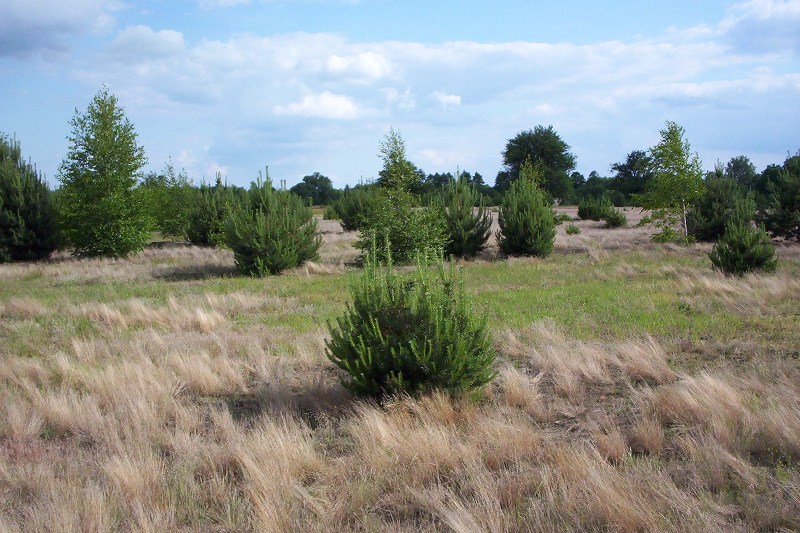Seral Community on:
[Wikipedia]
[Google]
[Amazon]
 A seral community is an intermediate stage found in
A seral community is an intermediate stage found in
 A seral community is an intermediate stage found in
A seral community is an intermediate stage found in ecological succession
Ecological succession is the process of how species compositions change in an Community (ecology), ecological community over time.
The two main categories of ecological succession are primary succession and secondary succession. Primary successi ...
in an ecosystem advancing towards its climax community
In scientific ecology, climax community or climatic climax community is a historic term for a community of plants, animals, and fungi which, through the process of ecological succession in the development of vegetation in an area over time, hav ...
. In many cases more than one seral stage evolves until climax conditions are attained. A prisere is a collection of seres making up the development of an area from non-vegetated surfaces to a climax community.
A seral community is the name given to each group of plants within the succession. A primary succession
Primary succession is the beginning step of ecological succession where species known as pioneer species colonize an uninhabited site, which usually occurs in an environment devoid of vegetation and other organisms.
In contrast, secondary su ...
describes those plant communities that occupy a site that has not previously been vegetated. These can also be described as the pioneer community. Computer modeling
Computer simulation is the running of a mathematical model on a computer, the model being designed to represent the behaviour of, or the outcome of, a real-world or physical system. The reliability of some mathematical models can be determin ...
is sometimes used to evaluate likely succession stages in a seral community.
Depending on the substratum and climate, a seral community can be one of the following:
; Hydrosere: Community in water
; Lithosere: Community on rock
; Psammosere
A psammosere is the sequence of plant succession that has been initiated on sand.
A psammosere is an intermediate stage in ecological succession, known as a seral community, that begins life on newly exposed coastal sand. The most common psammo ...
: Community on sand
; Xerosere: Community in dry area
; Halosere: Community in saline body (e.g. a salt marsh
A salt marsh, saltmarsh or salting, also known as a coastal salt marsh or a tidal marsh, is a coastal ecosystem in the upper coastal intertidal zone between land and open saltwater or brackish water that is regularly flooded by the tides. I ...
)
Examples
Seral communities insecondary succession
Secondary succession is the secondary ecological succession of a plant's life. As opposed to the first, primary succession, secondary succession is a process started by an event (e.g. forest fire, harvesting, hurricane, etc.) that reduces an a ...
can be seen in a recently logged conifer
Conifers () are a group of conifer cone, cone-bearing Spermatophyte, seed plants, a subset of gymnosperms. Scientifically, they make up the phylum, division Pinophyta (), also known as Coniferophyta () or Coniferae. The division contains a sin ...
ous forest. During the first two years, grass
Poaceae ( ), also called Gramineae ( ), is a large and nearly ubiquitous family (biology), family of monocotyledonous flowering plants commonly known as grasses. It includes the cereal grasses, bamboos, the grasses of natural grassland and spe ...
es, heath
A heath () is a shrubland habitat found mainly on free-draining infertile, acidic soils and is characterised by open, low-growing woody vegetation. Moorland is generally related to high-ground heaths with—especially in Great Britain—a coole ...
s and herbaceous
Herbaceous plants are vascular plants that have no persistent woody stems above ground. This broad category of plants includes many perennials, and nearly all annuals and biennials.
Definitions of "herb" and "herbaceous"
The fourth edition of ...
plants such as fireweed will be abundant. After a few more years shrub
A shrub or bush is a small to medium-sized perennial woody plant. Unlike herbaceous plants, shrubs have persistent woody stems above the ground. Shrubs can be either deciduous or evergreen. They are distinguished from trees by their multiple ...
s will start to appear; and about six to eight years after clearing, the area is likely to be crowded with young birch
A birch is a thin-leaved deciduous hardwood tree of the genus ''Betula'' (), in the family Betulaceae, which also includes alders, hazels, and hornbeams. It is closely related to the beech- oak family Fagaceae. The genus ''Betula'' contains 3 ...
es. Each of these stages can be referred to as a seral community.
In the far western part of North America, chaparral
Chaparral ( ) is a shrubland plant plant community, community found primarily in California, southern Oregon, and northern Baja California. It is shaped by a Mediterranean climate (mild wet winters and hot dry summers) and infrequent, high-intens ...
plant communities are typically controlled by periodic natural wildfires. In the southern portion of the Coast Ranges and in Southern California
Southern California (commonly shortened to SoCal) is a geographic and Cultural area, cultural List of regions of California, region that generally comprises the southern portion of the U.S. state of California. Its densely populated coastal reg ...
chaparral
Chaparral ( ) is a shrubland plant plant community, community found primarily in California, southern Oregon, and northern Baja California. It is shaped by a Mediterranean climate (mild wet winters and hot dry summers) and infrequent, high-intens ...
, toyon is often a locally dominant taxon in seral communities transitional between coastal sage scrub
Coastal sage scrub, also known as coastal scrub, CSS, or soft chaparral, is a low scrubland plant community of the California coastal sage and chaparral subecoregion, found in coastal California and northwestern coastal Baja California. It is ...
.
See also
* Allogenic succession * Autogenic succession * Complex early seral forest * Frederic Clements * PlagioclimaxReferences
{{DEFAULTSORT:Seral Community Ecological succession